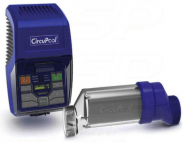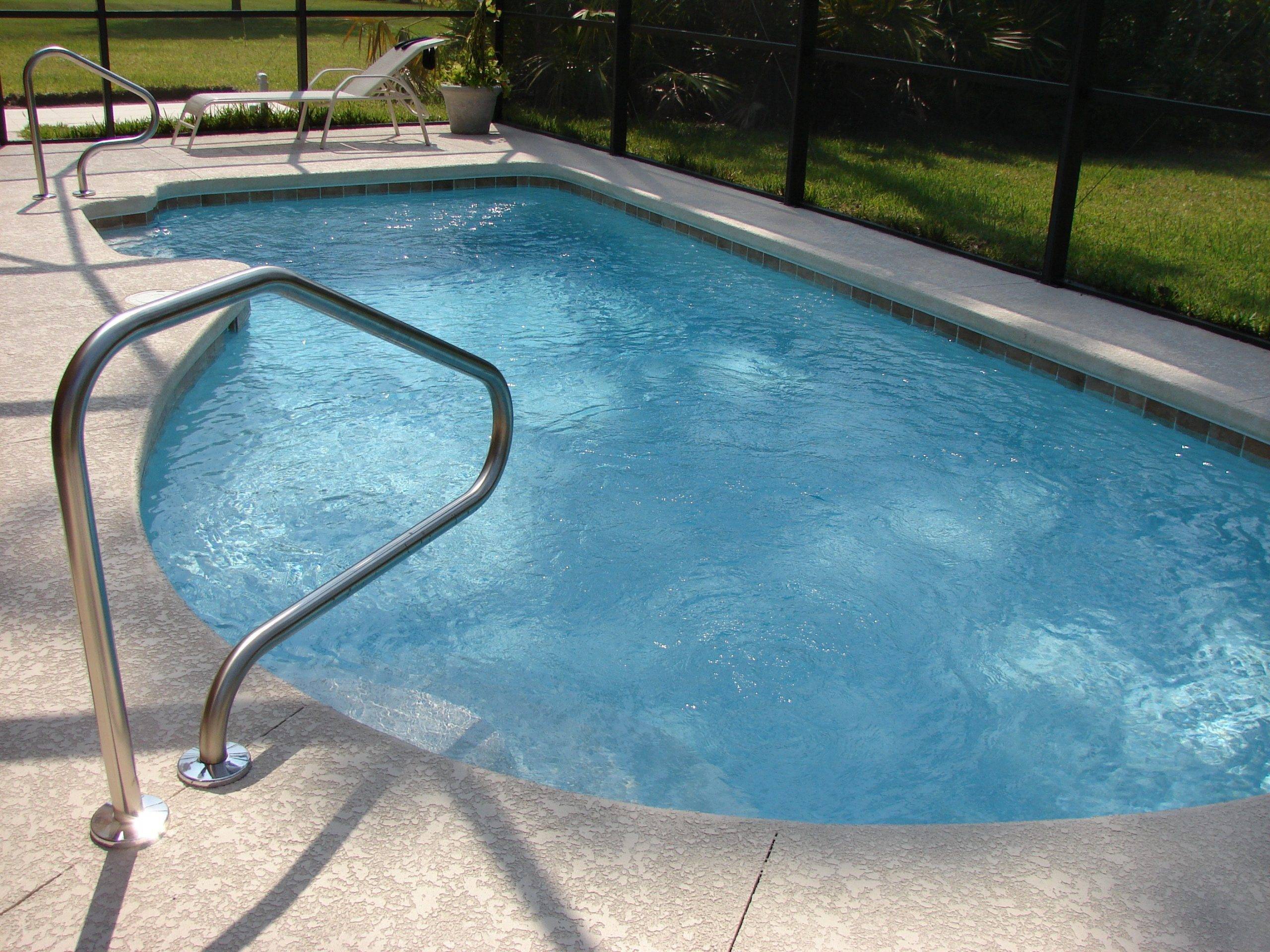Hi folks. I learned everything I know about pool maintenance from this site, so I should have come to you earlier.
I guess my first question is: are there tutorial articles about switching over to SWG? This site has a lot of great articles/posts, but I couldn't find a primer on switching over to SWG, and that would be really helpful. It'd probably answer a bunch of questions I have so people don't have to repeat what has already been said. I'm making my way through the other posts to gather as much information as I can.
To give some background, my main motivation right now is that I have a booster pump for our Polaris pool cleaner, and the pump has lived its best life. I've gotten quotes to replace it, and pump and installation will run me about $800 which I am fine with. (I don't want to do it myself.) But while I'm having someone out to replace the booster pump, I'm exploring the possibility of getting a SWG installed.
I made a video and took pictures for the pool guy (who didn't want to come out to do a quote), so I'll share that here:
Pool Equipment
The narration on the video is targeted at the pool equipment vendor.
I got quotes from two vendors. The first guy said that I should have a master controller installed to make sure that neither the booster pump nor the SWG runs when the main pump is not running. When he gave me a full quote, it looked like this:
$5856 Controller, SWG, booster pump, screen logic bundle
$2486 controller
$850 controller & SWG installation
$165 materials
$220 breaker
$70 breaker light
$585 booster pump
$225 booster pump installation
$45 materials
$100 intelliflo comm cable
$210 pool salt
$740 screen logic bundle
$160 screen logic install
After inquiring what the logic bundle (and install) was, he said that was a component that allows you to control the equipment remotely (like on your phone), and that it was optional and could be removed. So without that, it's $4956.
The largest component there was the master controller, but it's hard to separate out because part of that equipment relates to the SWG. I asked whether we strictly had to have the master controller, and he gave me a quote without it, and it looked like this:
$2918 Booster pump & SWG, no controller
$545 booster pump
$225 booster pump installation
$45 materials
$1315 salt system
$329 salt system installation
$45 materials
$140 control mounting
$210 pool salt
$64 chem resistant check valve
I got a quote from a second vendor, and he said that while having a master controller was ideal, it wasn't strictly necessary. He said that the SWG had controls so that it wouldn't operate if no water was flowing, and I said that I basically operated the booster pump manually, so there was no (or very little) risk if running it without the main pump putting water through it. Given that, he gave me a quote with no master controller, and it looks like this:
$3863.50 Salt Cell, power center for SWG, booster pump & install, salt
$675.50 salt cell
$1675.50 power center for SWG
$75 plumbing
$35 electrical
$850 Polaris booster pump & installation
$350 installation of SWG
$202.50 salt
Okay. So a bunch of questions for you all.
1) What are your thoughts about operating my setup without a master controller. Reasonable? Inadvisable? Insane?
2) What are the components of the SWG? Before I started getting quotes, I thought it was just one unit (which needed to be plugged in), and was basically self-contained. Is that not the case? Does there need to be a power system specifically for the SWG which is separate from the SWG itself? I was particularly confused by the first quote I got (the $5856 one above) where the master controller seemed to be closely tied to the SWG. (There was no separate line item for the SWG at all!) I find this all a bit confusing.
3) Another factor in all this is that while the main pump seems to be running fine, its display is on the fritz and sometimes it works, and sometimes it doesn't. I've been living with this for a couple years, and it's been doable given that I have the schedule set the way that I want it. I can also turn it off as needed. But if I need to do something more complicated (e.g., run the pump 24/7 and not have the scheduled on/off automatically kick in), and it's one of the times when the screen is not working, then that is something I won't be able to do. The possibility exists of getting just the screen replaced, but that would likely be so expensive that it's not worth it, especially given that I don't know what the remaining lifetime of the pump is. (I inherited it in 2016 and don't know how old it was before that.)
4) Back to what I said at the top of this post -- *is* there a tutorial/primer about running a SWG? I don't know the basics, so such a thing would be helpful. I see various things on the Internet, but nothing as complete as I hope (i.e., explaining the equipment, and the day-to-day operation/maintenance), and something endorsed by the people on this site (whom I trust) would be great.
I do have a bunch more questions and daily operation, but that can wait till later. I think? Unless you tell me that I need to do X, Y & Z *before* getting the equipment installed otherwise I will be in a bad state.
Thanks in advance, everyone.
Mason
I guess my first question is: are there tutorial articles about switching over to SWG? This site has a lot of great articles/posts, but I couldn't find a primer on switching over to SWG, and that would be really helpful. It'd probably answer a bunch of questions I have so people don't have to repeat what has already been said. I'm making my way through the other posts to gather as much information as I can.
To give some background, my main motivation right now is that I have a booster pump for our Polaris pool cleaner, and the pump has lived its best life. I've gotten quotes to replace it, and pump and installation will run me about $800 which I am fine with. (I don't want to do it myself.) But while I'm having someone out to replace the booster pump, I'm exploring the possibility of getting a SWG installed.
I made a video and took pictures for the pool guy (who didn't want to come out to do a quote), so I'll share that here:
Pool Equipment
The narration on the video is targeted at the pool equipment vendor.
I got quotes from two vendors. The first guy said that I should have a master controller installed to make sure that neither the booster pump nor the SWG runs when the main pump is not running. When he gave me a full quote, it looked like this:
$5856 Controller, SWG, booster pump, screen logic bundle
$2486 controller
$850 controller & SWG installation
$165 materials
$220 breaker
$70 breaker light
$585 booster pump
$225 booster pump installation
$45 materials
$100 intelliflo comm cable
$210 pool salt
$740 screen logic bundle
$160 screen logic install
After inquiring what the logic bundle (and install) was, he said that was a component that allows you to control the equipment remotely (like on your phone), and that it was optional and could be removed. So without that, it's $4956.
The largest component there was the master controller, but it's hard to separate out because part of that equipment relates to the SWG. I asked whether we strictly had to have the master controller, and he gave me a quote without it, and it looked like this:
$2918 Booster pump & SWG, no controller
$545 booster pump
$225 booster pump installation
$45 materials
$1315 salt system
$329 salt system installation
$45 materials
$140 control mounting
$210 pool salt
$64 chem resistant check valve
I got a quote from a second vendor, and he said that while having a master controller was ideal, it wasn't strictly necessary. He said that the SWG had controls so that it wouldn't operate if no water was flowing, and I said that I basically operated the booster pump manually, so there was no (or very little) risk if running it without the main pump putting water through it. Given that, he gave me a quote with no master controller, and it looks like this:
$3863.50 Salt Cell, power center for SWG, booster pump & install, salt
$675.50 salt cell
$1675.50 power center for SWG
$75 plumbing
$35 electrical
$850 Polaris booster pump & installation
$350 installation of SWG
$202.50 salt
Okay. So a bunch of questions for you all.
1) What are your thoughts about operating my setup without a master controller. Reasonable? Inadvisable? Insane?
2) What are the components of the SWG? Before I started getting quotes, I thought it was just one unit (which needed to be plugged in), and was basically self-contained. Is that not the case? Does there need to be a power system specifically for the SWG which is separate from the SWG itself? I was particularly confused by the first quote I got (the $5856 one above) where the master controller seemed to be closely tied to the SWG. (There was no separate line item for the SWG at all!) I find this all a bit confusing.
3) Another factor in all this is that while the main pump seems to be running fine, its display is on the fritz and sometimes it works, and sometimes it doesn't. I've been living with this for a couple years, and it's been doable given that I have the schedule set the way that I want it. I can also turn it off as needed. But if I need to do something more complicated (e.g., run the pump 24/7 and not have the scheduled on/off automatically kick in), and it's one of the times when the screen is not working, then that is something I won't be able to do. The possibility exists of getting just the screen replaced, but that would likely be so expensive that it's not worth it, especially given that I don't know what the remaining lifetime of the pump is. (I inherited it in 2016 and don't know how old it was before that.)
4) Back to what I said at the top of this post -- *is* there a tutorial/primer about running a SWG? I don't know the basics, so such a thing would be helpful. I see various things on the Internet, but nothing as complete as I hope (i.e., explaining the equipment, and the day-to-day operation/maintenance), and something endorsed by the people on this site (whom I trust) would be great.
I do have a bunch more questions and daily operation, but that can wait till later. I think? Unless you tell me that I need to do X, Y & Z *before* getting the equipment installed otherwise I will be in a bad state.
Thanks in advance, everyone.
Mason



